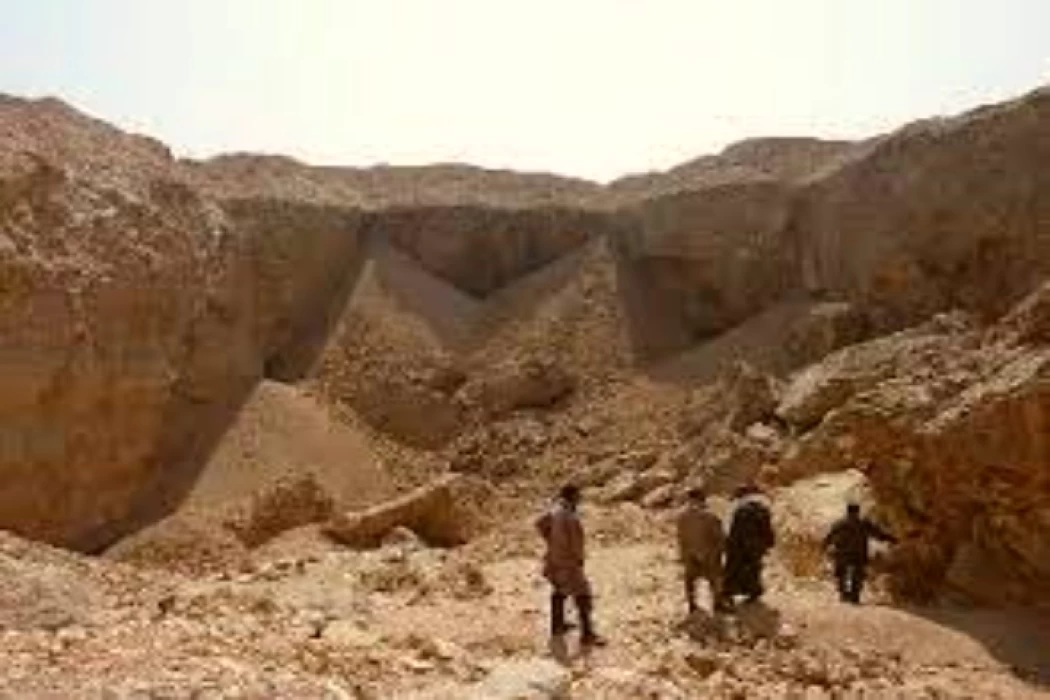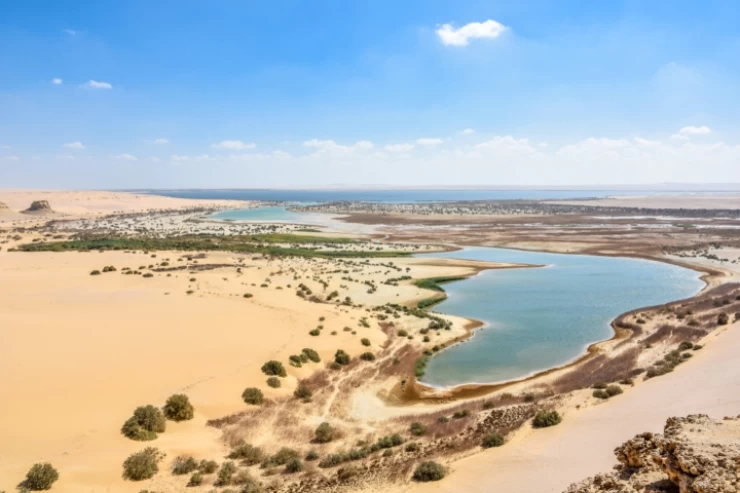
Gabal al-Tayr
On the top of the mountain, one of the most important religious shrines, and one of the stops of the Holy Family's journey in Egypt, the monastery of Our Lady, which contains an important spot that has become an international shrine, is the cave where the Holy Family lived for 3 days of the flight to escape from the oppression of the Romans.
When you set foot in that area, you wonder how the Virgin Mary, Christ, and Joseph the carpenter climbed that high-altitude mountain. There are carved stones on the hill, is a staircase from bottom to top. When you climb that staircase, you find yourself in front of one of the great monasteries, witnessing the escape journey inside the cave where the Holy Family took refuge and stayed, that cave that does not exceed several meters in both area and height.
Dr. Tharwat Al-Azhari, director of tourism in Minya, said that the monastery was called the monastery of Jabal al-Tir, where the historian Al-maqrizi says that there is a bird known as the bougiris bird, which resembles the Abu gardan Bird, and this bird is one of the migratory birds that escape from the winter and cold of Europe.
It is narrated that during the passage of the Holy Family in front of the mountain, a rock almost fell on them, so Jesus placed the palm of his hand in front of the rock and pressed his palm on it. the stone roof was replaced by an armed roof by the work of a second role in the early twentieth century by Bishop Sawiris, the reclusive Bishop of Minya and the ashmunites in 1938.
He went on to say that this church follows the layout of the basilican churches, where the church consists of an almost rectangular area with dimensions of approximately 18.10 m x 21.60 M, and it is divided into three arcades by two symmetrical pillars, each of which consists of four stone columns crowned with Corinthian crowns.this grotto is one of the important, blessed places that visitors are keen to visit continuously, as well as a collection of icons dating back to the early Christian era.
For his part, Major General Emad Kadwani, governor of Minya, said that we are working on developing all archaeological and tourist areas to put the province on the world tourism map, as the state's hand extends to every inch of the province's land, and it was the development witnessed by the area and the church, where a set of guideposts were made on the roads leading to the area, a set of pergolas to receive visitors, tiling the front and back yard with basalt surrounding the monastery with changing the electricity, water and sewage network in the area, paving the link from the old eastern desert road to the monastery with a length of 1 km with afforestation and lighting from the appropriations of the Ministry of Tourism and antiquities for 2.5 million Pound.
The governor added that the second stage of the development of the area witnessed the development of the courtyard and the entrance to the monastery, which included tiling the entrance of the archaeological church from the break to the archaeological church with a length of 175 m in Basalt with the work of paving slabs as sidewalks and afforestation of the entrance.















